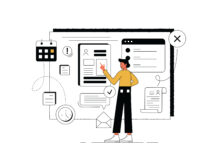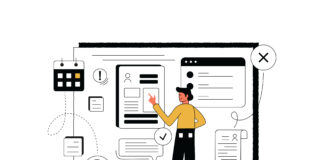
In the rapidly evolving landscape of human resources (HR), digital tools are revolutionizing traditional practices, particularly in the realms of onboarding and employee documentation. The adoption of digital solutions streamlines processes, enhances efficiency, and elevates the employee experience from day one.
The Evolution of HR Practices
Traditional Onboarding Methods
Historically, onboarding processes involved cumbersome paperwork, manual data entry, and lengthy orientation sessions. These traditional methods often resulted in inefficiencies, delays, and inconsistent experiences for new hires.
Digital Transformation in HR
The advent of digital tools and technologies has reshaped HR practices, offering innovative solutions to streamline onboarding and documentation processes. By leveraging digital platforms, HR departments can automate tasks, centralize information, and deliver personalized experiences to new hires.
3 Digital Tools for Onboarding
1. Onboarding Portals
Onboarding portals provide a centralized hub where new hires can access essential information, complete paperwork, and engage with relevant resources. These portals streamline the onboarding process, ensuring a smooth and seamless transition for new employees.
Learn more about Onboarding Portals
2. Electronic Forms and Signatures
Electronic forms and signatures eliminate the need for paper-based documentation, enabling new hires to complete onboarding paperwork digitally. With solutions such as DocuSign and Adobe Sign, HR departments can collect signatures and approvals electronically, reducing administrative burden and accelerating onboarding timelines.
3. Virtual Onboarding Sessions
Virtual onboarding sessions leverage video conferencing platforms to facilitate interactive orientation sessions for remote or distributed teams. These sessions provide new hires with valuable information about company culture, policies, and expectations, fostering engagement and connection from afar.
Discover Virtual Onboarding Solutions
3 Digital Tools for Employee Documentation Management
1. Electronic Document Management Systems (EDMS)
Electronic Document Management Systems (EDMS) serve as centralized repositories for storing, organizing, and managing employee documentation. These systems offer features such as version control, access controls, and document indexing, enabling HR departments to maintain compliance and streamline document workflows.
Explore Electronic Document Management Systems (EDMS)
2. Cloud-Based Document Collaboration Platforms
Cloud-based document collaboration platforms such as Google Workspace and Microsoft 365 facilitate seamless collaboration on employee documents. HR teams can create, edit, and share documents in real-time, ensuring consistency and accuracy across distributed teams.
3. Automated Document Workflows
Automated document workflows automate repetitive tasks such as document routing, approvals, and notifications. By implementing workflow automation solutions, HR departments can streamline document processes, reduce manual intervention, and improve efficiency.
Discover Workflow Automation Solutions
Benefits of Digital HR Tools
Enhanced Efficiency
Digital HR tools streamline onboarding and documentation processes, reducing administrative burden and accelerating time-to-productivity for new hires. By automating tasks and eliminating manual data entry, HR departments can focus on strategic initiatives and employee engagement.
Improved Accuracy and Compliance
Digital tools ensure accuracy and compliance by standardizing processes, enforcing policies, and maintaining audit trails. By centralizing employee documentation and implementing access controls, HR departments can mitigate compliance risks and maintain data integrity.
Elevated Employee Experience
Digital onboarding experiences set the tone for the employee journey, fostering engagement, and connection from the outset. By delivering personalized onboarding experiences and providing access to relevant resources, organizations can enhance employee satisfaction and retention.
Challenges and Considerations
Data Security and Privacy
Ensuring the security and privacy of employee data is paramount in the digital age. HR departments must implement robust security measures such as encryption, access controls, and data encryption to protect sensitive information and comply with regulatory requirements.
User Adoption and Training
Achieving widespread user adoption of digital tools requires effective change management and training initiatives. HR departments must educate employees on how to use digital tools effectively, address concerns and resistance to change, and provide ongoing support and guidance.
The Path Forward: Maximizing the Impact of Digital HR Tools
The digital transformation of HR practices represents a paradigm shift in how organizations onboard new hires and manage employee documentation. By harnessing digital tools such as onboarding portals, electronic forms, document management systems, and workflow automation solutions, HR departments can streamline processes, enhance efficiency, and elevate the employee experience. While challenges such as data security, compliance, and user adoption may arise, proactive measures and strategic initiatives can mitigate risks and maximize the benefits of digital HR tools. As organizations continue to embrace digitalization, the integration of digital tools into HR practices will play a pivotal role in driving innovation, agility, and employee




